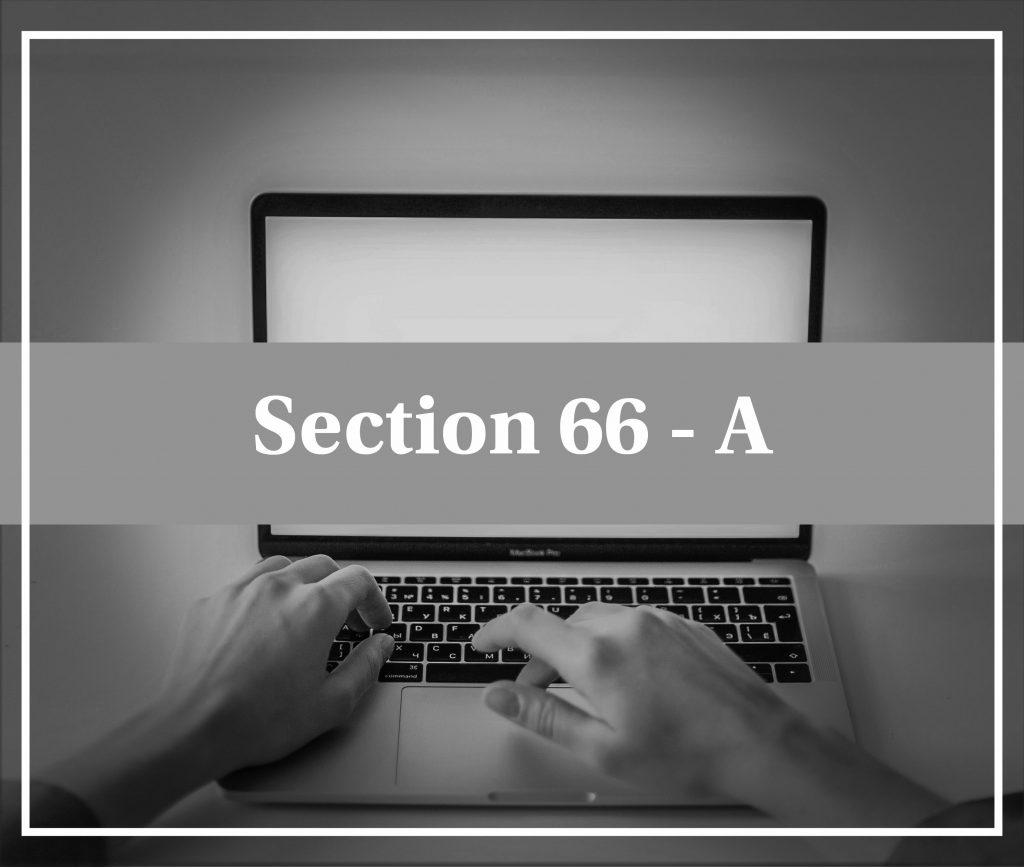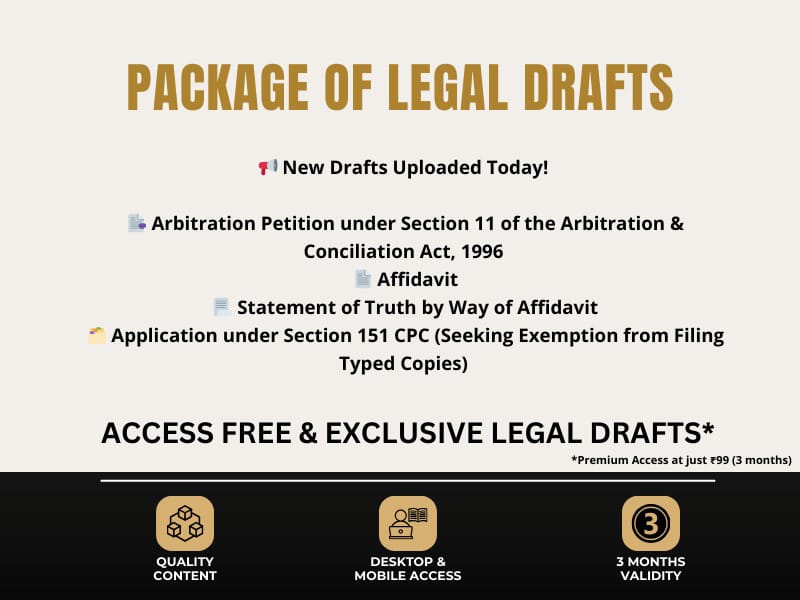ISSUES
- Whether Sections 66-A, 69-A, and 79 of the Information Technology Act, 2000 are constitutionally valid?
- Constitutional Validity of Rules 3 to 10, 14, and 16 of the Information Technology (Procedure and Safeguards for Blocking Access of Information by Public) Rules 2009.
- Validity of Information Technology (Intermediary Guidelines) Rules, 2011 – Rr. 3 (2) & (4).
- Whether Section 118 (9) of the Kerala Police Act, 1960 is constitutionally valid?
JUDGMENT OVERVIEW
- Section 66A of the Information Technology Act was struck down in its entirety as violative of Article 19(1) (a) and not covered by one of the 8 subject-matters contained under article 19 (2). Section 69 A wasupheld as constitutionally valid and Section 79 is valid subject to Section 79 (3) (b)which has to be read down to mean that the intermediary upon receiving actual knowledge that a court order has been passed asking it to expeditiously remove or disable access to certain material must then fail to expeditiously remove or disable access to that material.
- Rules 3 to 10,14 and 16 of the Information Technology (Procedure & Safeguards for Blocking for Access of Information by Public) Rules 2009 held constitutionally valid.
- Information Technology (Intermediary Guidelines) Rules, 2011 – Rr. 3 (2) & (4) held constitutionally valid subject to sub-rule (4).
- Section 118 of the Kerala Police Act was struck down as violative of Article 19 (1) and not saved under 19 (2) of the Indian Constitution.
INTRODUCTION
In a sublime affirmation of one of the most basic of human rights contained under Article 19 of the Indian Constitution, the Supreme Court of India acting as a bulwark for preserving free speech against arbitrary action, in a Judgment delivered by Two Judge Bench of J. Chelameswar, &J. Rohinton Fali Nariman struck down Section 66A of the Information Technology Act, 2000 in its entirety being violative of Article 19(1)(a) and not saved by any of the eight subjects laid under Article 19(2).
It is a case of paramount significance in protecting free speech online against arbitrary restrictions imposed on citizens through the notorious Section 66 A, which was added by the Amendment Act of 2009 and which came into effect from 27.10.2009. This case is one of the few instances wherein the Supreme Court has adopted the rather extreme stance of declaring a censorship law as altogether illegitimate.
Section 66 A was also struck down on grounds of overbreadth as it takes into its sweep protected speech and in doing so, causes a “chilling effect” on free speech that is so innocent. The terms contained under the article are vague and open to arbitrary interpretations which not only curtail the right of the speaker but also do not lay down the contours of expected behaviour. Furthermore,it allows those enforcing the law, scope for arbitrary, whimsical, or discriminatory action and is therefore susceptible to abuse.
Section 66A of the IT Act states as follows:
66-A. Punishment for sending offensive messages through communication service, etc.-Any person who sends, by means of a computer resource or a communication device, –
(a) any information that is grossly offensive or has menacing character; or
(b) any information which he knows to be false, but for the purpose of causing annoyance, inconvenience, danger, obstruction, insult, injury, criminal intimidation, enmity, hatred or ill will, persistently by making use of such computer resource or a communication device; or
(c) any electronic mail or electronic mail message for the purpose of causing annoyance or inconvenience or to deceive or to mislead the addressee or recipient about the origin of such messages, shall be punishable with imprisonment for a term which may extend to three years and with fine.
Explanation.- For the purposes of this section, terms “electronic mail” and “electronic mail message” means a message or information created or transmitted or received on a computer, computer system, computer resource or communication device including attachments in text, image, audio, video and any other electronic record, which may be transmitted with the message.”
FACTS
In 2012, there was a bandh called in the wake of the death of Shiv Sena chiefBal Thackery. Two women,Shaheen Dhada and Rinu Srinivasan expressed their displeasure on the bandh following which the Mumbai Police arrested them under Section 66 A of the IT Act. While the charges against them were dropped, the arrest had sparked protests and outcry. It was felt that the police had arbitrarily misused their power under Section 66 A.
CONTENTIONS BY PARTIES
The Petitioners maintained that the causing of annoyance, inconvenience, danger, obstruction, insult, injury,criminal intimidation,enmity, hatred, or ill-will are all outside the purview of Article 19(2). The petitioners also contended that their rights under article 14 & 21 were violated and that no intelligible differentia between those who use the internet and those who used print or other media.(The court held that there is an intelligible differentia)
The Additional Solicitor General on behalf of the State upheld the constitutionality of section 66 A stating that the legislature is in the best position to understand and appreciate the needs of the people. He further stated that vagueness is not a ground to declare a statute unconstitutional if the statute is otherwise legislatively competent and non-arbitrary.
COMMENTS
Terms such as “grossly offensive”, “annoying” and “inconvenience” contained in the act are not covered under the General Clauses Act, IT Act or any other statute and thus cast the net very wide for interpretation. Through this inclusive and vague definition, Section 66A puts an unconstitutional burden on the fundamental right under Section 19 (1)(a) which gives all citizens the right to freedom of speech and expression.It is not covered under any subject contained under Section 19 (2) which places reasonable restrictions. In Chintaman Rao v. The State of Madhya Pradesh, Court held that:
“The phrase “reasonable restriction” connotes that the limitation imposed on a person in the enjoyment of the right should not be arbitrary or of an excessive nature, beyond what is required in the interests of the public. The word “reasonable” implies intelligent care and deliberation, that is, the choice of a course which reason dictates”.
This unreasonable burden causes a ‘chilling effect’ on speech. In S. Khushboo v. Kanniammal[1] it was stated that “The law should not be used in a manner that has chilling effects on the “freedom of speech and expression” and the need to tolerate unpopular views.
What may be offensive for someone may not be offensive to another. This subjective interpretation of the law has led to wrongful excesses by the state which has arbitrarily, excessively, and disproportionately curtailed the scope of the right given to the citizens. This right is of the essence in forming an informed citizenry. In RomeshThapper v. State of Madras, the court stated that freedom of speech lay at the foundation of all democratic organizations. And further In Bennett Coleman & Co. v. Union of India & Ors., that Freedom of Speech and the press is the Ark of the Covenant of Democracy because public criticism is essential to the working of its institutions.
Equally, it was also upheld that the government cannot curtail the freedom of speech to promote general public interest citing the Judgment of the court in In Sakal Papers (P) Ltd. & Ors. v. Union of India[2],
“It may well be within the power of the State to place, in the interest of the general public,
restrictions upon the right of a citizen to carry on the business but it is not open to the State to achieve this object by directly and immediately curtailing any other freedom of that citizen guaranteed by the Constitution and which is not susceptible of abridgment on the same grounds as are set out in clause (6) of Article 19.”
The Court stated 3 concepts that are fundamental in understanding the right to freedom of speech and expression: Discussion, Advocacy, and Incitement. The first two are crucial to speech but it is only when it reaches incitement does 19 (2) apply. Further, if speech was to be limited on the grounds of Public Order, the law must pass a test of clear and present danger enunciated by Justice Holmes in Schenck v. United States[3] and further refined inAbrams v. Unites States.[4]
The Judgment also talked about the use of Judgments from across the Atlantic and the applicability of Judgments from the United States to India.
The Judgment also held that Section 79 is valid subject to Section 79 (3) (b) which has to be read down to mean that the intermediary upon receiving actual knowledge that a court order has been passed asking it to expeditiously remove or disable access to certain material must then fail to expeditiously remove or disable access to that material.
CONCLUSION
The Supreme Court of India in this landmark Judgment struck down Section 66 A and Section 118 of the Kerala Police Act, upheld section 69 A as constitutional and Section 79 as valid subject to Section 79 (3) (b).
It is a well-documented fact that Section 66 A was an excess on part of the State. It was misused by arbitrary action which was often excessive and discriminatory which put a burden on Individual Liberty and speech. This freedom is a cardinal value that lies at the very core of the Indian Constitution. It has become all the more important to fiercely preserve free speech and expression as it is not only essential to our system of Government as a Democracy and our status as its citizens but as a basic right of any human being.
By-
Bhavika Sharma
Amity Law School, Noida
[1] (2010) 5 SCC 600
[2][1962] 3 S.C.R. 842
[3], 63 L. Ed. 470
[4]250 U.S. 616 (1919)



